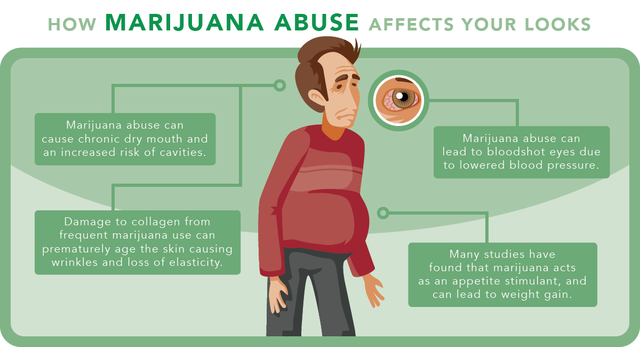Eyes: Tetrahydrocannabinol (THC), the chemical responsible for the marijuana high, lowers blood pressure, impacting cells in the eyes. Blood vessels in the eyes expand in response to low blood pressure, a normal response to maintain proper vision. Dilated capillaries and open blood vessels increase blood flow, leading to bloodshot eyes. Redness is more visible against the white part of the eye (sclera). The higher the THC content, the greater the likelihood of bloodshot eyes, therefore edibles can also cause this side effect. Marijuana smoke creates additional eye irritation in some people. This can result in itchy, dry and watery eyes in addition to a “bloodshot” appearance. 

